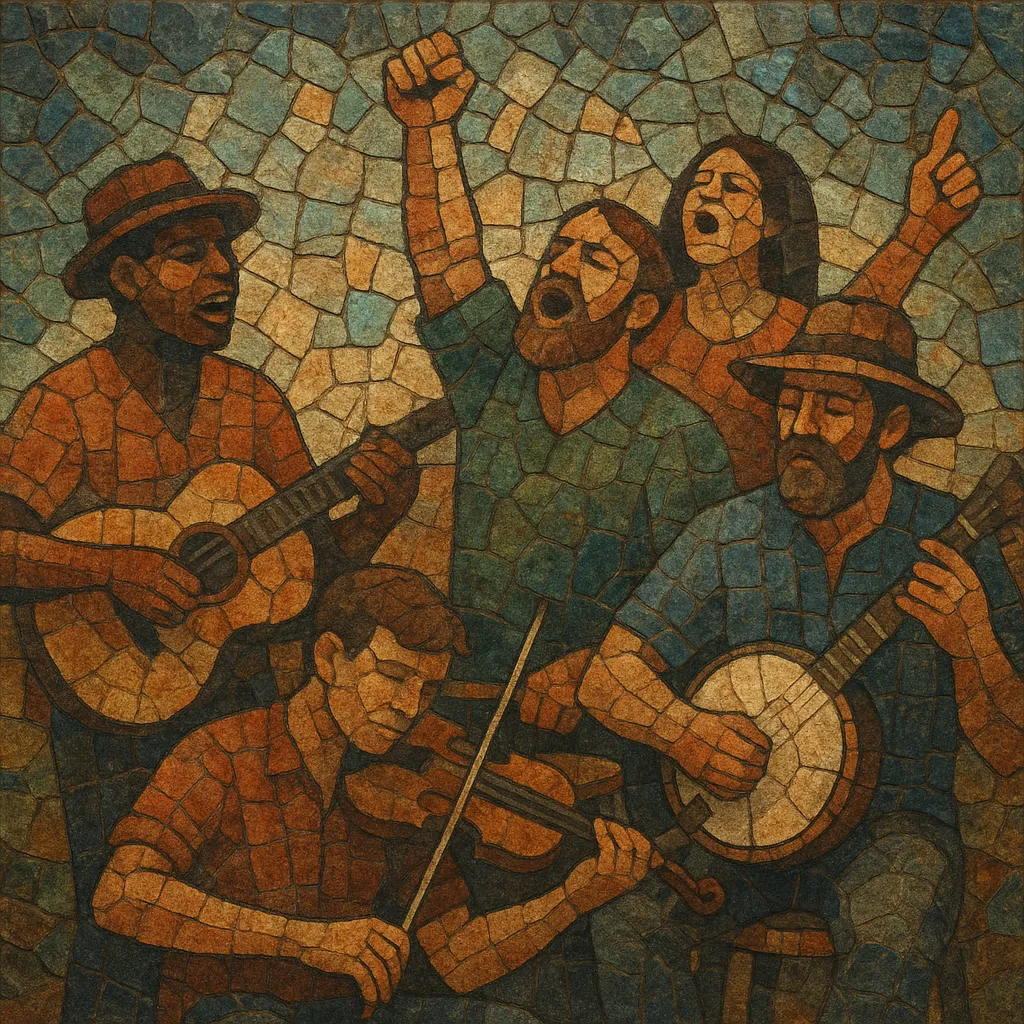
Stomp and holler is a contemporary, anthemic strain of indie folk/Americana marked by foot-stomp rhythms, handclaps, and gang-vocal shout-along hooks.
It blends rustic, acoustic instrumentation (acoustic guitar, banjo, mandolin, upright bass, fiddle, floor toms) with pop-ready choruses that invite audience participation, often punctuated by unison shouts like “hey!” and “ho!”.
The songs typically center on communal feeling, wanderlust, resilience, and heartfelt romance, presented with an earthy, campfire energy that scales to festival stages.
Production favors organic, warm tones and dynamic builds from intimate verses to explosive, cathartic refrains, bridging roots music aesthetics with modern indie-pop accessibility.
Stomp and holler crystallized out of the late-2000s indie folk and Americana revival. Earlier currents—Americana, folk rock, singer-songwriter traditions, bluegrass/newgrass, and alternative country—provided the acoustic palettes and lyrical sensibilities. The festival boom and the rise of communal, audience-participation anthems created a context where acoustic instruments could carry stadium-sized hooks.
Between 2009 and 2012, bands popularized a sound built on four-on-the-floor kick patterns (or literal foot-stomps), handclaps, and chant-like choruses. Tracks such as “Ho Hey” by The Lumineers and “Little Talks” by Of Monsters and Men brought stomping rhythms and shout-along refrains to pop radio, while Mumford & Sons and The Avett Brothers translated folk vigor into festival-scale singalongs. The Head and the Heart and Edward Sharpe & The Magnetic Zeros further codified the feel-good, communal esthetic.
The defining signatures include percussive stomps/claps, floor tom pulses, gang vocals, and bright, major-key progressions that rise toward cathartic hooks. Acoustic guitars, banjo, mandolin, fiddle, upright bass, and tambourine dominate, with arrangements that build dynamically from hushed verses to exuberant, shout-ready refrains.
As the sound saturated festivals and playlists, acts like The Strumbellas, Judah & the Lion, and The Lone Bellow broadened the palette—folding in pop production, arena-rock scale, or touches of alt-country. Some early standard-bearers shifted toward subtler textures, but the stomp-and-chant blueprint remained influential across indie pop and pop rock.
Stomp and holler helped normalize roots-forward instrumentation in mainstream indie and pop contexts, making communal, participatory choruses a staple of the 2010s festival era. Its impact is audible in folk pop and indie pop arrangements that borrow its stomping pulses, handclaps, and gang-vocal payoffs.

